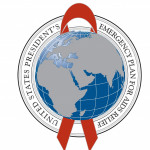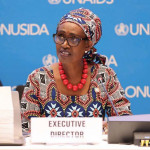An AIDS activist and an environmentalist sit together in a room, yet only one chair is occupied. How is this possible? You could concoct any number of theories (the AIDS activist sits on the environmentalist’s lap; one person sits on the floor). But as with all brainteasers, the simplest answer is typically overlooked: The AIDS activist and the environmentalist are one and the same.
Today, the worthy causes competing for our attention can seem endless. In an era where budgets to address a variety of global concerns are stretched ever thinner as resources shrink, and as the number of people around the world suffering from a variety of ills seems to expand every day, it’s no surprise that the battle to secure funds to address any crisis is heating up. The resolution to any one crisis may, these days, lie in attacking several at once. HIV/AIDS and environmental challenges may seem worlds apart, but seeing the connections between them may provide insight as to how to better fight them. Policymakers are starting to catch on. The recent President’s Emergency Plan for AIDS Relief (PEPFAR) reauthorization bill that was passed by the House of Representatives specified that $9 billion of the $50 billion allocated in the bill go toward fighting tuberculosis and malaria—two diseases that often affect HIV-positive people in the developing world.
Researchers are quickly beginning to appreciate the interconnectivity of the world’s largest crises. For example, officials recently logged record rates of HIV infection in Nagaland, an Indian state bordering the cyclone-ravaged nation of Myanmar, and some HIV-positive people in Myanmar struggled to access treatment well after the storms. Indeed, it’s impossible to examine any one cause without understanding how other causes affect it.
Australian researchers recently made headlines by saying that global warming and HIV could be closely tied. In his treatise A World Free of HIV, Daniel Tarantola, a professor of health and human rights at the University of New South Wales, in Sydney, argues that global warming could help boost new HIV infections and worsen conditions for poor people already living with the virus.
“Climate change is likely to have additional effects on our vulnerability to HIV,” writes Tarantola. “Climatologists foresee that within the next decades, vast areas will be affected by extreme natural disasters, some lost to rising waters and others, in Africa in particular, by expanding desertification.”
The implications are many. Access to clean water is already a treatment barrier for people with HIV in the developing world, and global warming will exacerbate the problem. People without access to a balanced diet or proper fluids may find that they can’t tolerate their meds and may skip doses, which can lead to drug resistance. Also, HIV-positive mothers with limited food sources may be tempted to breast-feed hungry children, even if they realize the risk of mother-to-child transmission.
Tarantola argues that the effects of global warming will put people at greater risk for contracting HIV, saying, “There is ample evidence that the unattended needs of uprooted communities and widening economic disparities within and across populations fuel vulnerability to HIV.” For example, as resources become more limited, people are likelier to engage in sex work to secure food and shelter for their families.
HIV-positive people in the U.S. aren’t immune to the effects of global warming either. Rising gas prices are already swallowing budgets for insurance and health care. As Hurricane Katrina demonstrated, extreme weather conditions can separate Americans from meds, care and counseling. In the U.S. and around the world, global warming—which leads to volatile weather, changes in crop yields and lack of potable water—will make it more difficult to establish infrastructures for people who most need care.
Perhaps in an ideal world, we’d have the time and resources to address all global health concerns, such as HIV, on a macro level, taking a multitude of factors into account. But in our very real world, the lesson is to try to keep a larger perspective on how combating societal issues—poverty, gender inequality, fuel consumption—can also play a role in beating AIDS.
“The lessons learned from [fighting] HIV have given rise to a new understanding of public health where it makes no sense to oppose a public health approach to HIV [in lieu of] a human rights approach: They are strongly bound to each other and both aim at achieving greater justice, greater well-being and dignity,” Tarantola writes. “The synergy between health, development and human rights needs to inform international development policies and programs.” Now, there’s a bright idea.
That’s Hot!
Global warming and HIV/AIDS are related, not competing, causes.






Comments
Comments